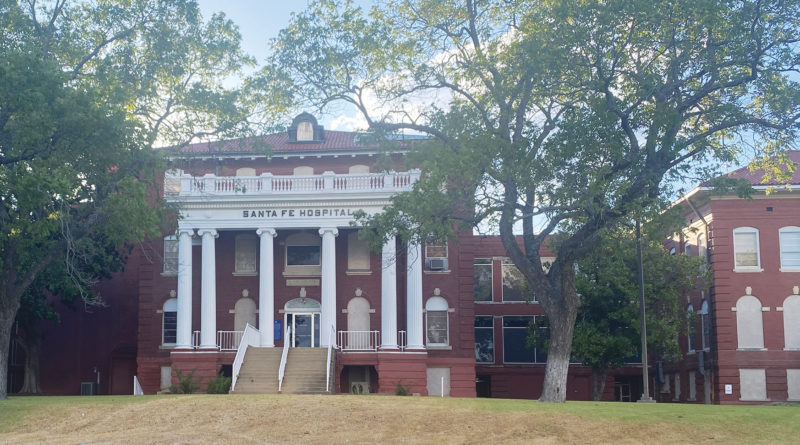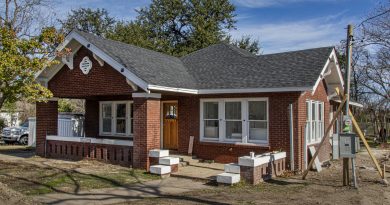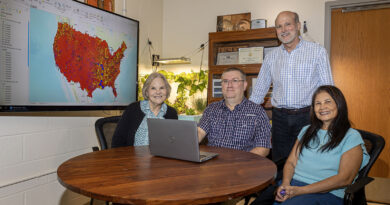Historical markers highlight health care moments in Temple
Story and photos by Rhonda Blacklock
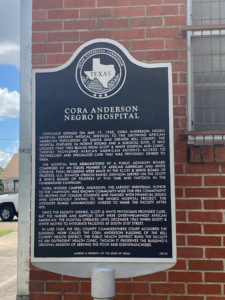 History: A retelling of past events, a recollection of people who shaped our lives today, and a walk down memory lane, reminiscing of times gone by. We’ve all learned about the American Revolution, Civil War, both World Wars, Martin Luther King Jr., and many more historical moments and figures.
History: A retelling of past events, a recollection of people who shaped our lives today, and a walk down memory lane, reminiscing of times gone by. We’ve all learned about the American Revolution, Civil War, both World Wars, Martin Luther King Jr., and many more historical moments and figures.
What about history closer to home? Many men and women have paved the way in many aspects and industries to develop Temple, Belton and our surrounding Central Texas communities. There are wonderful museums in the area that hold fascinating artifacts and tell the local stories, but have you ever been driving down a street and noticed those black markers with writing on them? Have you ever taken the time to get out and read them?
The Texas Historical Commission does a fantastic job memorializing people and events at geographical points to honor our past.
During the height of the COVID-19 pandemic, when social distancing was necessary, I found my sanity in my car, with a Texas Roadside Historical Marker guidebook and a map. I searched for these markers, and my curiosity for local history blossomed. I wanted to stand where our forefathers stood. I wanted to see the old school houses, old general mercantile, learn about where school teachers and local bankers and farmers were born, raised and became the predecessors for many of us today.
Although these markers stand in many places, most motorists will not notice while traveling to and from work, school or while out running errands. If you’re ever wondering what you can do today, or what interesting things you can take your kids to see, I encourage you to pack a picnic, grab your favorite beverage, and turn on some good tunes. Get out and explore your community and learn a little about our past.
There are several ways to find historical markers. One is to look out your vehicle window, especially toward significant historical buildings.
But if you don’t drive past any, the adventure ends prematurely. That is when Why Stop? A Guide to Texas Roadside Historical Markers edited by Betty Dooley Awbrey and Stuart Awbrey with the Texas Historical Commission comes in handy. The pages are filled with thousands of markers from across the state, directions to find them, and an engraved description of each.
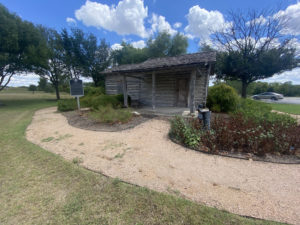
There isn’t enough room to fit 16,000+ markers, so you may stumble upon one that isn’t in the book, but it is a great starting point. You can download the Texas Historical Marker Guide, developed by Gregory Moore, on your smartphone. The app can be used without internet connection, you can browse by city or county, use it with your phone’s location services and keep track of all the markers you visit.
A recent trip led me to Santa Fe Hospital, at 600 S. 25th St. in Temple. Established in 1891, it served employees of the Gulf, Colorado & Santa Fe Railroad Company. Dr. Arthur Carroll Scott accepted the chief surgeon appointment at Santa Fe Hospital in 1892. The historical marker is located on the south side of the main entrance, near the flag pole.
While there, I decided to locate other historical markers for our community’s health care founders. Baylor Scott & White stands out among the rest. As you drive by the Temple hospital’s front entrance, you can see a row of eight historical markers offering a quick overview of the founders, Dr. Scott and his partner, Dr. Raleigh R. White. There are also markers dedicated to the Scott & White School of Nursing, and Wilma Carlton, first superintendent of the Nursing Program. Thanks in part to her, our area is known for its enriched and exceptional nursing program.
After you learn about the founders of the most well-known hospital in our area, take a drive over to Dr. Scott’s little cabin, located close to Avenue R, near the Baylor Scott & White Dermatology Clinic. The replica stands in a beautiful spot, and its history won’t disappoint.
At 509 S. Ninth St., you will find the Cora Anderson Building. It recently housed a facility for the Community Health Department Clinic.
Before that, it was the Cora Anderson Negro Hospital where the Black community received health care before desegregation. The historical marker out front shares the history of this widely unknown place.
At 1717 E. Avenue J, standing in front of the former Meredith-Dunbar Elementary School, a historical marker honors Dr. Thomas Edison Nixon, who committed to serving his community in a time when health care for the African American community was limited.
History resonates all around us. Keep it alive and don’t let these markers pass you by. Stop and give them a read, you never know what historical journey it will take you on.

